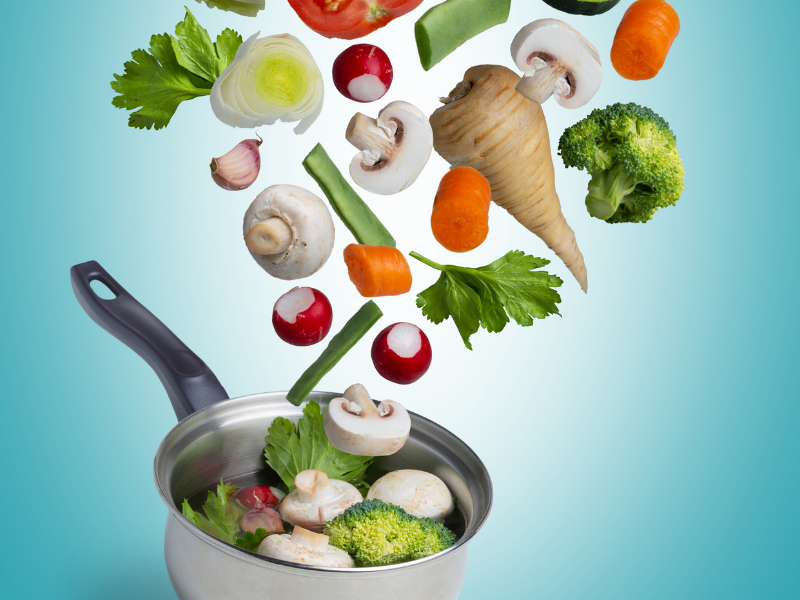It’s easy to mistake many food intolerance and/or sensitivities for allergies. The tricky part is that food intolerances can cause many symptoms that mimic those of a food allergy.
First, the difference that designates a food intolerance versus an allergy is whether the symptom occurred as a result of what’s called an IgE antibody.
The IgE antibody only appears when there is an allergy to the food. That’s why, for an allergy diagnosis, testing from a healthcare professional is required.
Some Common Reactions of Food Intolerances, Sensitivities and Allergies
Several types of reactions can happen from both allergies and sensitivities.
Anaphylaxis or Anaphylactic Shock
Anaphylaxis is a state of shock that plunges the body into a potentially life threatening allergic reaction when exposed to specific foods, medications, or stinging insects (e.g., bees).
This reaction usually happens very fast.
Symptoms
Symptoms can include sneezing, coughing, itching, hives, swelling, blood pressure drop, abdominal pain, dizziness, tightness in the throat, and shortness of breath.
Treatment
The treatment for an anaphylactic reaction is an epinephrine injection and calling 9-1-1.
Additionally, avoiding what caused your reaction is important to prevent future life-threatening reactions. Later reactions can get increasingly worse.
Oral allergy syndrome or pollen-food allergy syndrome
Oral allergy syndrome is when you eat a food (usually fruits and vegetables) and you might have tingling or itchy lips or tongue. It doesn’t affect other body systems, just the mouth. It’s mostly just uncomfortable (and a little disconcerting).
After cooking, a lot of times those same foods don’t cause the same bothersome reaction.
Foods commonly associated with this syndrome include raw apples, pineapple, bananas, cherries, kiwis, peaches, celery, tomatoes, potatoes, melons, avocado, walnuts, pecans and hazelnuts.
This type of reaction is not dangerous. It’s common among those who are also allergic to grass and ragweed pollen. (That’s where its name comes from.)
Symptoms
When symptoms such as rash, itching, sneezing, and swelling occur around the mouth, lips, and tongue.
Treatment
You don’t need a treatment, per se. Cooking the fruit or vegetable often reduces the symptoms. The heat breaks down the proteins responsible for this type of reaction.
Eosinophilic Esophagitis (EoE)
EoE is a condition that results in an inflammatory response in the esophagus that can feel like difficulty swallowing.
For some reason, some foods may cause a greater concentration of disease-fighting white blood cells (called eosinophils) in the esophagus.
Symptoms
Heartburn-like symptoms, nausea, vomiting, abdominal pain, or difficulty swallowing after eating certain foods.
Treatment
If the symptoms occur, it’s important to speak with your healthcare provider to see if you should get tested for allergies or need medications.
Avoiding foods that cause this reaction is key. A prescribed steroid can reduce the inflammation caused by EoE. Sometimes specific food restrictions help with treatment.
Food Intolerances
Lactose Intolerance
Milk products contain the carbohydrate lactose. For people with lactose intolerance (another common food intolerance), lactose causes gas to build up in the digestive tract. This is not an allergy, but rather an inability for the body to effectively digest it.
Lactose is a two-part sugar molecule that needs the enzyme lactase to break down the final step.
Symptoms
Abdominal pain, nausea, excess gas, bloating, and diarrhea.
Treatment
Sometimes taking a lactase replacement enzyme (over the counter product) can be helpful. It usually takes a day or two to work through the system. Avoid food with lactose. It’s important to note, cheese is much lower in lactose than milk (yogurt is in between cheese and milk).

Celiac Disease v Gluten Intolerance
Wheat, rye and barley contain a protein called gluten. Oats do not contain gluten, but many people with celiac disease avoid oats.
(Unless oats are certified gluten-free and processed in separate facilities, they are often processed on the same equipment as other grains. Therefore, they’re commonly cross-contaminated with gluten during their processing.)
Celiac disease involves an immune response to gluten. Gluten intolerance may involve the immune system and can signal for you to start paying attention to your body’s response. You’ll need to ask your healthcare provider and get tested to know for certain.
Symptoms
The symptoms are varied and can be tricky to identify. They may range from unnoticeable to rash to headache, or the more widely known abdominal pain, nausea, excess gas, bloating, and diarrhea.
Treatment
Speak with your healthcare provider if you notice the symptoms of gluten intolerance.
The Bottom Line
Food intolerance, sensitivities, and allergies are increasingly common. There are several different kinds, and most are not serious or life-threatening. However, they all cause unwelcome symptoms.
Avoid the offending foods as a general rule. If you believe you have a serious food allergy, it’s critical that you see your healthcare provider to determine if you need to carry emergency medication for future exposures.
Want to learn to cook so you can enjoy your favorite foods without allergens? Check out Meals Made Easy, an online cooking course for new cooks, to learn how upping your game in the kitchen can help you live your best life.
References
Mayo Clinic. (n.d.). Lactose intolerance. Retrieved from https://www.mayoclinic.org/diseases-conditions/lactose-intolerance/symptoms-causes/syc-20374232
MedlinePlus. (2020, September 28). Anaphylaxis. Retrieved from https://medlineplus.gov/anaphylaxis.html
MedlinePlus. (2020, September 28). Food allergy. Retrieved from https://medlineplus.gov/foodallergy.html
Medscape. (2020, February 5). Food Allergies. Retrieved from https://emedicine.medscape.com/article/135959-overview#showall
National Institute of Allergy and Infectious Diseases. (2018, October 26). Identifying Causes of Food Allergy & Assessing Strategies for Prevention. Retrieved from https://www.niaid.nih.gov/diseases-conditions/food-allergy-causes-prevention
National Institute of Allergy and Infectious Diseases. (2019, September 11). Treatment for Living With Food Allergy. Retrieved from https://www.niaid.nih.gov/diseases-conditions/treatment-living-food-allergy
National Institute of Allergy and Infectious Diseases. (2018, October 25). Characterizing Food Allergy & Addressing Related Disorders. Retrieved from https://www.niaid.nih.gov/diseases-conditions/food-allergy-characterizing
NIH News in Health. (2017, March). Understanding Food Allergies. Retrieved from https://newsinhealth.nih.gov/2017/03/understanding-food-allergies
United States Food and Drug Administration. (2018, September 26). What You Need to Know about Food Allergies. Retrieved from https://www.fda.gov/food/buy-store-serve-safe-food/what-you-need-know-about-food-allergies



